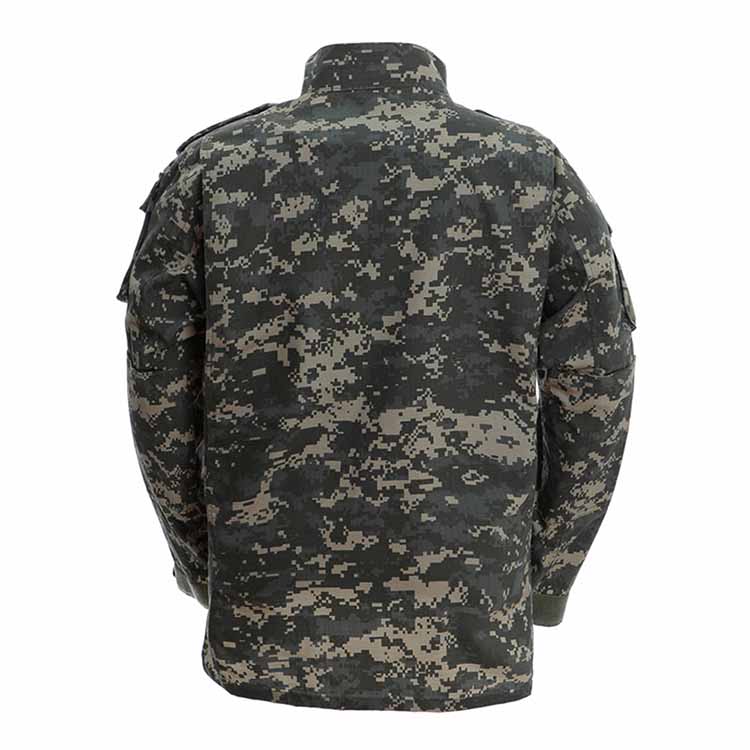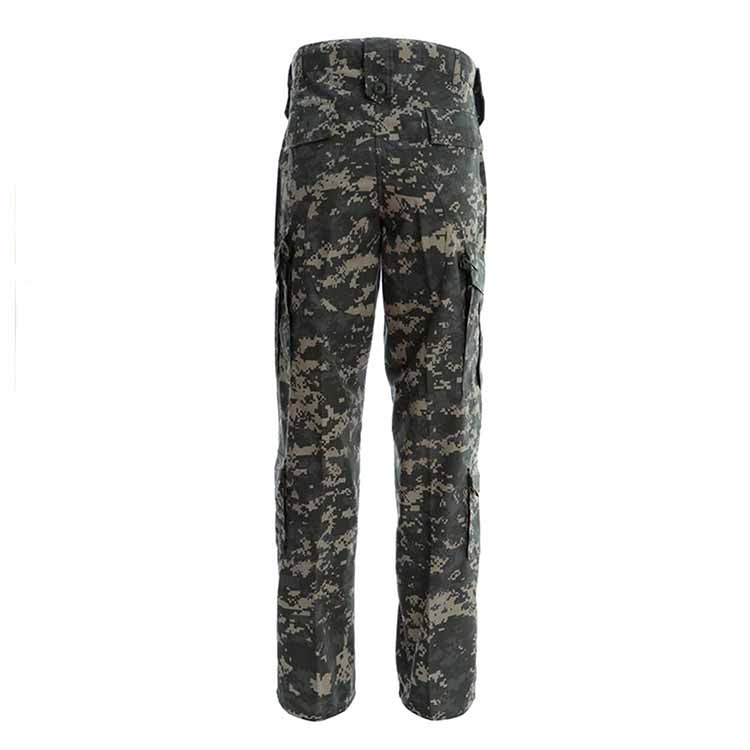



Materials:
65%Polyester + 35%Cotton
60% Cotton + 40%Polyester
50%Nylon + 50%Cotton
Fabric Type:
Ripstop / Twill
Size:
XS – XXL or customization
FEATURES:
Double layer stand-up collar with Velcro fastener
Crease on the back to increase the volume
Fly with zipper and velcro closure
Elbow / buttocks / knees are reinforced with double layer fabric
Velcro on each arm and chest for patch attachment
3 extra wide belt loops at the waist, perfect for military belt
Versatility and Practicality
The Army Combat Uniform is designed for all-around versatility. It combines practicality with effective camouflage, allowing soldiers to operate efficiently in a variety of settings.
Description:What uniform does the Army wear in combat? What is the current Army camo pattern? What does ACU and BDU stand for? Is the Army uniform ACU or OCP?
usmc utility uniform
What does the Army wear in combat?
The Army Combat Uniform (ACU) and the Flame-Resistant Army Combat Uniform (FRACU) consist of a jacket, trousers, patrol cap, moisture-wicking t-shirt and Army combat boots (temperate and hot weather) or mountain combat boots for rugged terrain.
What is the current Army Combat Uniform?
The Army Combat Uniform (ACU) is the utility uniform worn in garrison and in combat zones by the U.S. Army. It consists of a jacket and trousers in the Operational Camouflage Pattern (OCP), worn with combat boots and a t-shirt.
What is ACU and BDU?
It was supplanted by the ACU (Army Combat Uniform) which remains in use by the American military to this day. However, the abbreviation “BDU” is still used as an unofficial term meaning any combat uniform. Although the ACU eventually replaced the BDU as U.S. standard-issue, the concept of the BDU lived on.
Are Army ASU being phased out?
The ASU wear-out date, for all three Army components, is 30 September 2027, Effective 1 October 2027 the ASU will be known as the Army Blue Uniform (ABU). c. Transition wear guidance: Soldiers are authorized to wear the AGSU and follow the wear guidance in accordance with AR 670-1 and DA PAM 670-1.






